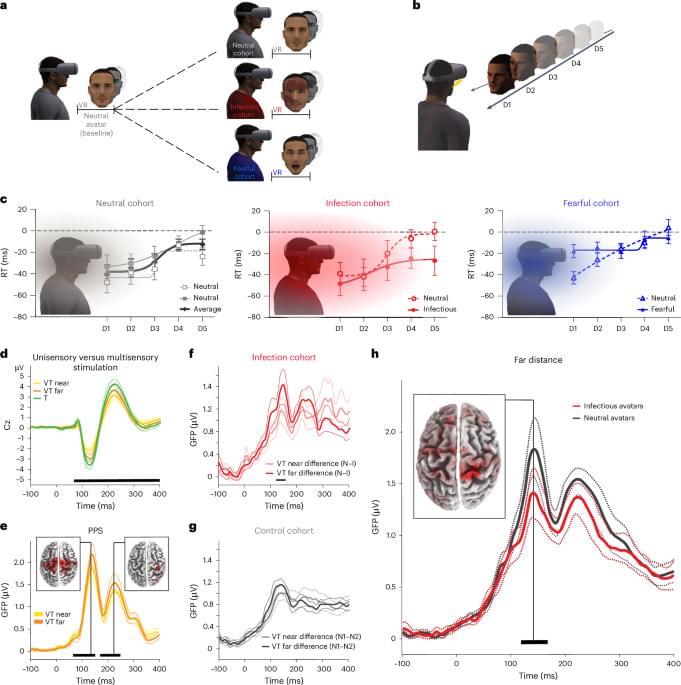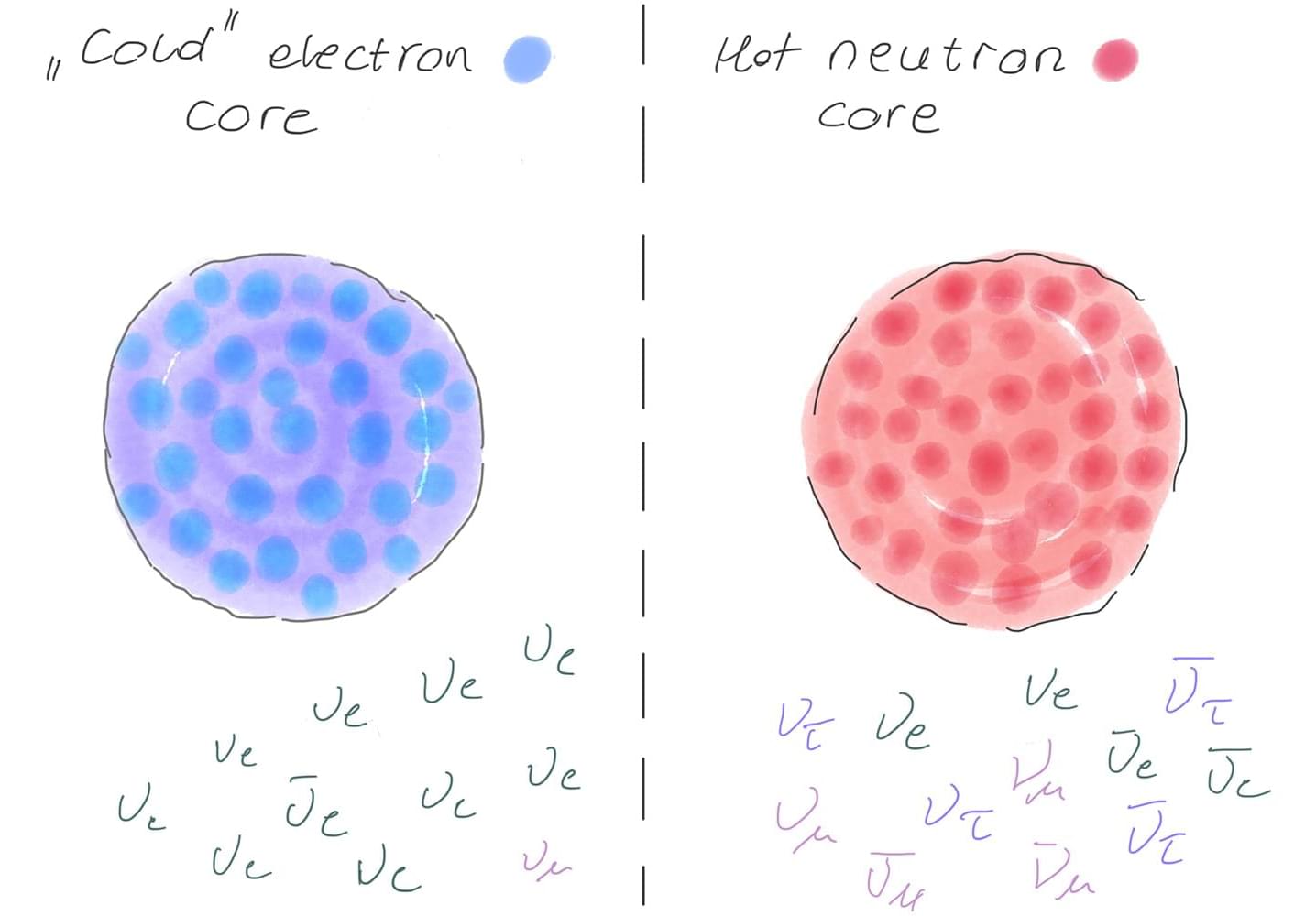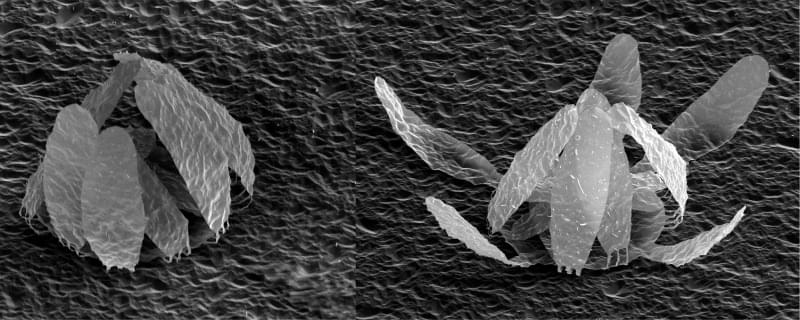Serino et al. show that seeing an infectious avatar approach the body in virtual reality triggers an immune response, indicating that the brain prepares the body to fight infections even for perceived, but not real, threats.



As a chronic condition, rheumatoid arthritis (RA) can’t be cured, so treatment focuses on managing the disease and controlling its progression. Although current treatments help control RA symptoms in most people, they cannot prevent the onset of RA or painful flare-ups.
Now, researchers publishing in ACS Central Science have developed nanoparticles that could slow disease progression and reduce flare severity, based on results from tests with human blood and mice models with RA-like disease.
For a person diagnosed with RA, their immune system attacks tissue that makes up the joints, causing inflammation, swelling and pain. However, as the disease progresses, serious cartilage and bone damage can occur if left uncontrolled.

A study published in Cell Reports Medicine reports a scalable, data-driven computational framework for designing combinatorial immunotherapies, offering hope for patients with poor responses to current immunotherapies.
Immunotherapy, particularly immune checkpoint blockade (ICB), has revolutionized cancer treatment. Widespread resistance to ICB is a major challenge in clinical practice.
To enhance treatment efficacy and overcome resistance, combining ICB therapy with chemotherapy or targeted therapy has become an important research direction. However, candidate combinations rely on empirical selection from existing drugs, and it is difficult to discover new candidates.

Can artificial intelligence, robots and surveillance protect workers on the job? Yes, according to the latest report from the International Labour Organization. In this episode of the Future of Work podcast, ILO occupational safety and health expert Manal Azzi explains how AI and technology is being used as a safety net, and not a threat, for workers worldwide.

Neutrinos are cosmic tricksters, paradoxically hardly there but lethal to stars significantly more massive than the sun. These elementary particles come in three known “flavors”: electron, muon and tau. Whatever the flavor, neutrinos are notoriously slippery, and much about their properties remains mysterious. It is almost impossible to collide neutrinos with each other in the lab, so it is not known if neutrinos interact with each other according to the standard model of particle physics, or if there are much-speculated “secret” interactions only among neutrinos.
Now a team of researchers from the Network for Neutrinos, Nuclear Astrophysics, and Symmetries (N3AS), including several from UC San Diego, have shown, through theoretical calculations, how collapsing massive stars can act as a “neutrino collider.” Neutrinos steal thermal energy from these stars, forcing them to contract and causing their electrons to move near light speed. This drives the stars to instability and collapse.
Eventually the collapsing star’s density becomes so high that the neutrinos are trapped and collide with each other. With purely standard model interactions, the neutrinos will be mostly electron flavor, the matter will be relatively “cold,” and the collapse will likely leave a neutron star remnant. However, secret interactions that change neutrino flavor radically alter this scenario, producing neutrinos of all flavors and leading to a mostly neutron “hot” core that may lead to a black hole remnant.

Eating pistachios every night for 12 weeks altered bacteria in the gut, according to new study. A new study reveals that swapping a typical nighttime carbohydrate snack for pistachios may beneficially alter gut bacteria in people with prediabetes. Conducted by Penn State researchers, the 12-week clinical trial found that pistachio consumption increased beneficial gut microbes like Roseburia and reduced harmful ones such as Blautia hydrogenotrophica. These microbiome changes could potentially support metabolic health and slow the progression to Type 2 diabetes. While more research is needed to confirm health outcomes, this study positions pistachios as a promising late-night snack with microbiome-boosting potential.
Prediabetes affects a third of people in the United States and most of them will develop Type 2 diabetes, yet effective dietary intervention strategies remain limited. Pistachios have shown promise in improving markers of diet quality, yet little is known about how they influence the gut microbiome — a key player in glucose regulation and inflammation.
A new study led by Kristina Petersen, associate professor of nutritional sciences at Penn State, determined that nighttime pistachio consumption affects gut bacteria in adults with prediabetes. Though the potential therapeutic implications of the findings remain unclear, according to Petersen, they may prove significant for people who are working to improve their metabolic health.

One of the most promising approaches to overcoming this challenge is topological quantum computing, which aims to protect quantum information by encoding it in the geometric properties of exotic particles called anyons. These particles, predicted to exist in certain two-dimensional materials, are expected to be far more resistant to noise and interference than conventional qubits.
“Among the leading candidates for building such a computer are Ising anyons, which are already being intensely investigated in condensed matter labs due to their potential realization in exotic systems like the fractional quantum Hall state and topological superconductors,” said Aaron Lauda, professor of mathematics, physics and astronomy at the USC Dornsife College of Letters, Arts and Sciences and the study’s senior author. “On their own, Ising anyons can’t perform all the operations needed for a general-purpose quantum computer. The computations they support rely on ‘braiding,’ physically moving anyons around one another to carry out quantum logic. For Ising anyons, this braiding only enables a limited set of operations known as Clifford gates, which fall short of the full power required for universal quantum computing.”
But in a new study published in Nature Communications, a team of mathematicians and physicists led by USC researchers has demonstrated a surprising workaround. By adding a single new type of anyon, which was previously discarded in traditional approaches to topological quantum computation, the team shows that Ising anyons can be made universal, capable of performing any quantum computation through braiding alone. The team dubbed these rescued particles “neglectons,” a name that reflects both their overlooked status and their newfound importance. This new anyon emerges naturally from a broader mathematical framework and provides exactly the missing ingredient needed to complete the computational toolkit.

When materials are created on a nanometer scale — just a handful of atoms thick — even the thermal energy present at room temperature can cause structural ripples. How these ripples affect the mechanical properties of these thin materials can limit their use in electronics and other key systems.
New research validates theoretical models about how elasticity is scale-dependent — in other words, the elastic properties of a material are not constant, but vary with the size of the piece of material.
Assistant Professor Jian Zhou, PhD ’18, collaborated with researchers from Argonne National Laboratory, Harvard University, Princeton University and Penn State University for a recently published paper in the Proceedings of the National Academy of Sciences.
Using a semiconductor manufacturing process, the team created alumina structures 28 nanometers thick (more than 1,000 times thinner than the diameter of a human hair) on the silicon wafer with thermal-like static ripples, then tested them with lasers to measure their behavior. To remove possible stress to the material that could affect the results, cantilevers held the wafers during testing.
Understanding how thin materials behave is key to electronics and other technology.

Researchers from MIT and elsewhere have designed a novel transmitter chip that significantly improves the energy efficiency of wireless communications, which could boost the range and battery life of a connected device.
Their approach employs a unique modulation scheme to encode digital data into a wireless signal, which reduces the amount of error in the transmission and leads to more reliable communications.
